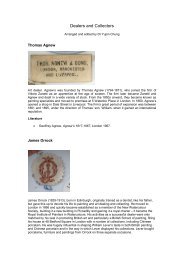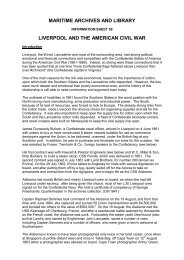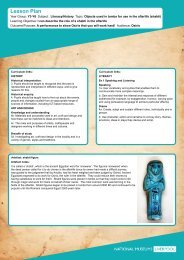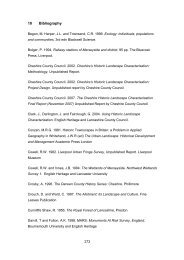full Contemporary Slavery Teachers' Resource - National Museums ...
full Contemporary Slavery Teachers' Resource - National Museums ...
full Contemporary Slavery Teachers' Resource - National Museums ...
You also want an ePaper? Increase the reach of your titles
YUMPU automatically turns print PDFs into web optimized ePapers that Google loves.
seCTIon A<br />
1957<br />
1969<br />
1981<br />
1989<br />
1998<br />
1999<br />
2000<br />
2005<br />
26<br />
ILO Convention (No. 105) Concerning the Abolition of Forced Labour<br />
obliges governments to suppress “any form of forced or compulsory labour”.<br />
Organization of American States (OAS) American Convention on<br />
Human Rights (Article 6: Freedom from <strong>Slavery</strong>)<br />
states: “no one shall be subject to slavery or to involuntary servitude, which are<br />
prohibited in all their forms, as are the slave trade and traffic in women,” and<br />
“no one shall be required to perform forced or compulsory labour.” Like the<br />
1950 european Convention, it also excludes work in situations of detention.<br />
African Union (formerly Organization of African Unity, OAU)<br />
African Charter on Human and Peoples’ Rights (Article 5)<br />
states: “All forms of exploitation and degradation of man, particularly slavery, slave<br />
trade, torture, cruel, inhuman or degrading punishment and treatment shall be prohibited.”<br />
UN Convention on the Rights of the Child (Articles 34 and 35)<br />
Protects children from all forms of sexual exploitation, including exploitation in<br />
prostitution and pornography, and prohibits the abduction, sale and trafficking of children.<br />
Rome Statute of the International Criminal Court<br />
established the International Criminal Court in the Hague, which has jurisdiction with<br />
respect to genocide, crimes against humanity, war crimes, and the crime of enslavement.<br />
ILO Convention (182) Concerning the Prohibition and Immediate Action for<br />
the Elimination of the Worst Forms of Child Labour<br />
Addresses the difficulty in distinguishing between excessive and exploitative forms<br />
of child labour and identifies the “worst forms”, such as slavery, debt bondage, forced<br />
labour, recruitment for armed forces, prostitution and drug trafficking.<br />
UN Protocol to Prevent, Suppress and Punish Trafficking in Persons<br />
Especially Women and Children (part of the 2000 UN Convention<br />
Against Transnational Organized Crime)<br />
Commits states to prevent and combat trafficking in persons, to protect and assist victims of<br />
trafficking and to promote co-operation among states in order to meet those objectives.<br />
Council of Europe Convention on Action against Trafficking in Human Beings<br />
Aims at preventing and combating trafficking in human beings, while guaranteeing<br />
gender equality. Also aims at protecting and assisting victims and witnesses, to<br />
ensure effective investigation and prosecution, while promoting international<br />
cooperation against human trafficking.<br />
The writings<br />
of the<br />
freed slave<br />
equiano<br />
olaudah<br />
contributed<br />
greatly to<br />
anti-slavery<br />
campaigns.<br />
5. Combating contemporary slavery<br />
seCTIon A<br />
Until the mid-1990s, it was widely thought that slavery was a thing of<br />
the past. This complacent belief has now been challenged by human<br />
rights campaigners, who have helped people understand that forms<br />
of contemporary slavery still exist. More than 100 governments have<br />
recently drafted new anti-slavery laws – especially concerning human<br />
trafficking. non-Governmental organisations (nGos), especially in the<br />
global south, where more victims of contemporary slavery live, have been particularly<br />
active in raising these issues. And more longstanding nGos, such as Amnesty International<br />
and Human Rights Watch, have highlighted instances of contemporary slavery within<br />
their broader work on human rights issues around the world.<br />
From yesterday’s abolitionists…<br />
Historical opposition to slavery came from two main sources: enslaved Africans and<br />
abolitionists (people who were not enslaved but were committed to ending slavery).<br />
Despite the dangers involved for the slaves, there were many slave revolts on plantations<br />
and estates. some slaves escaped and established independent communities outside<br />
european control. others took up arms and secured their freedom on the battlefield.<br />
Wherever slavery came to an end, both slaves and former slaves were central to the story.<br />
Transatlantic slavery was a system for acquiring and sustaining colonies, strengthening<br />
empire, and building industrial strength in the home country. This meant that<br />
abolitionists were taking on powerful economic interests. slave owners claimed that<br />
slavery was both morally and religiously justified. But the pressure from the abolitionist<br />
campaign eventually succeeded, and lawmakers acted to outlaw slavery.<br />
The movement exposing and opposing slavery used many strategies and tactics.<br />
• ex-slaves gave powerful testimony in speeches and writings, making the case<br />
against slavery<br />
• Abolitionists wrote articles and pamphlets, and gave sermons and lectures<br />
against slavery<br />
• People signed petitions calling for an end to slavery<br />
• People boycotted goods made by slave labour, such as the 300,000 people who<br />
joined a boycott of sugar grown on plantations using slave labour. Pamphlets<br />
encouraged the public to buy sugar made by free labour instead<br />
<strong>Contemporary</strong> slavery Teachers’ <strong>Resource</strong> <strong>Contemporary</strong> slavery Teachers’ <strong>Resource</strong> 27


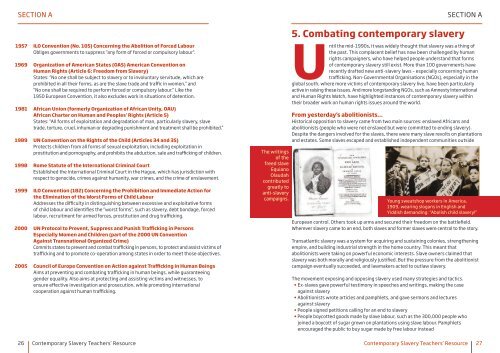
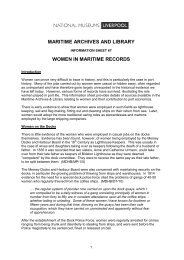
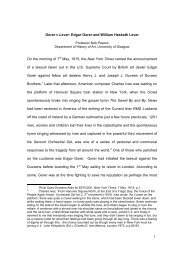
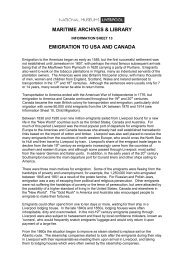
![Ancient Egypt trail [227kb .pdf] - National Museums Liverpool](https://img.yumpu.com/48998817/1/184x260/ancient-egypt-trail-227kb-pdf-national-museums-liverpool.jpg?quality=85)

